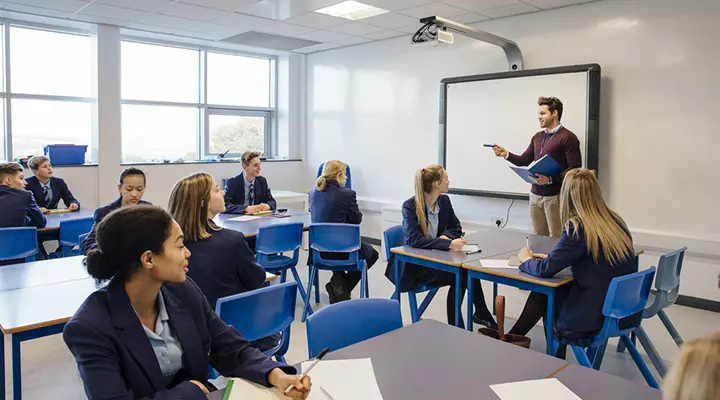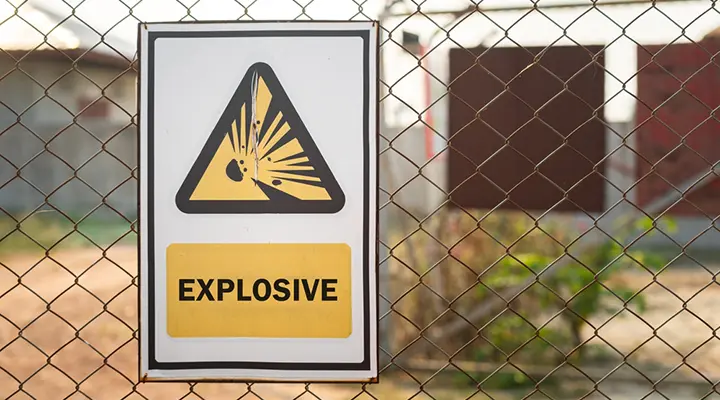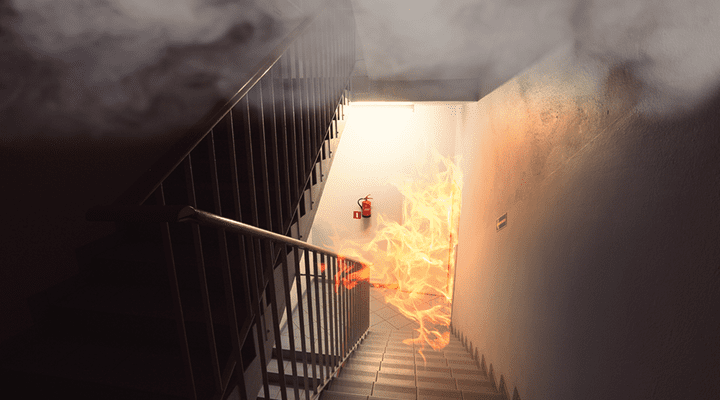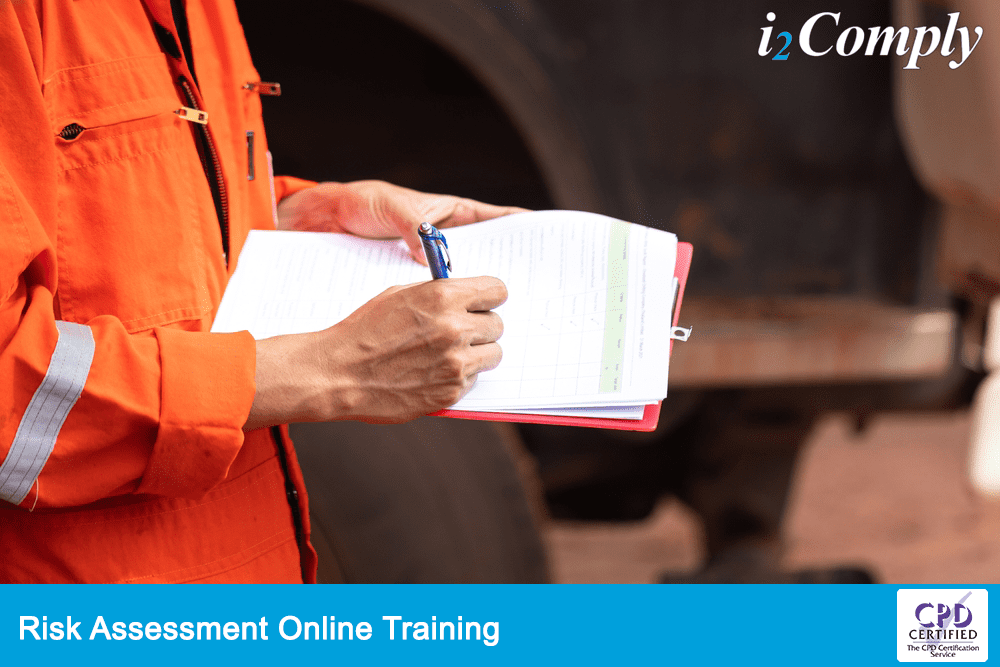Fires can have devastating effects. People can lose their life or be seriously injured and businesses face severe consequences due to damage to property and stock. So it is essential to implement effective fire prevention measures, and this starts with understanding the risks.
Completing a fire risk assessment helps to ensure the safety of the people living or working in the premises. Also, it protects the building and businesses from damage. By law, the responsible person must conduct and regularly review the fire risk assessment. The purpose of the assessment is to identify and reduce risks of fire and also to protect people from harm.
This article explains what a fire risk assessment is and who is responsible for carrying it out.
What is a fire risk assessment?
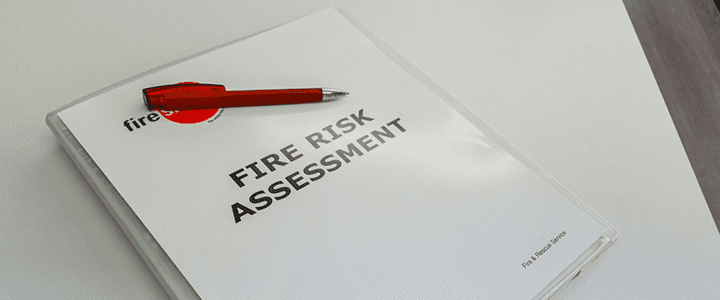
A fire risk assessment is a review of a building, and of the activities carried out in the building, to identify fire risks that could harm people. It identifies fire hazards, which may put people at risk and it offers recommendations to make the building safer.
The Regulatory Reform (Fire Safety) Order 2005, the Fire Safety (Scotland) Regulations 2006 and the Fire Safety Regulations (Northern Ireland) 2010 require that fire risk assessments are carried out regularly in all commercial premises and the communal areas of residential premises. Also, if a business has five or more employees, you must keep a written record of the fire risk assessment.
Who is the responsible person?

The responsible person is the person who has control, or a degree of control, of a building. This could be the owner, landlord or occupier of a business premises or other non-domestic building. In relation to a workplace, the responsible person is the employer, if the workplace is to any extent under their control.
The responsible person must take reasonable steps to reduce the risks of fire and ensure that people who work or visit the premises can escape safely if a fire occurs.
The general duties of a responsible person include:
- Carry out a fire risk assessment and review it regularly.
- Take adequate and appropriate fire safety measures to minimise the risk of injury or death.
- Monitor and review fire prevention and protection measures in the premises.
- Eliminate or reduce risks from dangerous substances.
- Ensure that fire detecting and fire-fighting equipment is available in the premises, can be easily accessed and is indicated by signs.
- Ensure that fire exits and routes to fire exits are clear at all times.
- Regularly carry out and review fire drills.
- Ensure that any equipment is in good working order and repaired, when necessary.
- Appoint a competent person to help them to undertake preventative and protective measures.
- Inform and train employees.
What are the 5 steps of a fire risk assessment?
By law, the responsible person must conduct regular fire risk assessments of the premises to ensure the safety of people who work there or visit the building. The 5 steps of a fire risk assessment help to identify what they need to do to minimise the risks of a fire and protect people from harm. The 5 steps of a fire risk assessment are:
1. Identify the fire hazards
Fire occurs when a source of heat comes into contact with fuel and oxygen. So, they must be kept separate. The responsible person should identify anything that can produce heat or cause sparks, such as faulty electrical equipment, cooking appliances, portable heaters, cigarettes, and hot processes such as welding or grinding. Also, they need to identify any fuel sources. This include packaging materials, rubbish, petrol, paint, wood, paper, plastic, rubber and foam. Oxygen sources can include air conditioning systems, oxygen cylinders and fireworks that contain oxidising materials.
2. Identify people at risk
Everyone is at risk if a fire occurs. However, some people may be more vulnerable than others. The responsible person needs to identify the people who may be in the building, what they are doing and where they are. They should pay particular attention to those who may be working in noisy environments, staff who work night shifts or people in an isolated part of a building. Also, the responsible person should identify people with disabilities, children, or those who are not familiar with the building, such as visitors and customers.
3. Evaluate, remove or reduce the risks
Once the responsible person has identified the fire hazards and people who may be at risk, they should evaluate the risks of a fire occurring and the risks to people in the building. Then, they should take actions to remove or reduce those risks.
First, the responsible person should consider how they could remove or reduce the identified hazards. For example, if there are any risks that faulty electrical appliances could cause sparks and start a fire, they must organise the repair or replacement of the appliance. Also, if there are any gas or fuel leaks, especially in the areas where hot work is present, the responsible person must arrange regular servicing and repair work by qualified engineers. Furthermore, the responsible person must ensure that rubbish and other combustible materials are not close to a heat source and they must maintain good housekeeping at all times.
Then the responsible person needs to consider how they could protect people from harm if a fire occurs. For example, how will a fire be detected, how will everyone be alerted of the fire in the building? Also, they need to consider whether everyone will be able to use escape routes to evacuate quickly and safely and if there are fire extinguishers that can be easily accessed to put out a small fire. The responsible person should also decide how to improve emergency procedures.
4. Record findings, prepare an emergency plan and provide training
The responsible person should record any fire hazards that they have found and the actions they have taken to reduce or remove them. Also, they should prepare a clear emergency plan that identifies what people need to do in an emergency. The plan should include safe evacuation procedures for people who may need help. It should identify people who will have specific roles if a fire breaks out, such as fire marshals. If your business does not have a designated marshal, we recommend participating in our Online Fire Marshal Training Course. Furthermore, the responsible person should ensure that staff receive fire safety training, so that they are aware of how to prevent fire from occurring and know what to do in an emergency.
5. Review and update the fire risk assessment regularly
There is no legal timeframe for when the responsible person should review the fire risk assessment. However, they must review the fire risk assessment regularly and update it when there have been significant changes. These changes can be changes in work processes, layout of the premises or people that use the building. They should update the risk assessment to ensure it is up to date and safety measures are relevant.
Need risk assessment training?
We offer a quality, self paced, CPD-certified online risk assessment course.
Need more information?
You can find further information on risk assessments on the UK government website page Fire safety in the workplace.
For additional information on our training courses or if you have a question, please contact our friendly support team on 0333 577 5016 or sales@i2comply.com.
